Traditional Okinawa Village and Omoro Arboretum
- HOME
- Facilities
- Native Okinawan Village and Omoro Botanical Garden
- Botanical Garden exploring map
- Psychotria rubra, Miscanthus sinensis
Psychotria rubra, Miscanthus sinensis
General description of Psychotria rubra
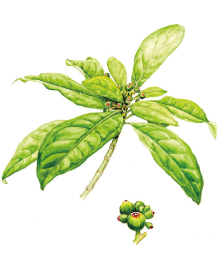
| Omoro name | Psychotria rubra |
|---|---|
| Japanese name | Bochoji, Nagami-bochoji |
| Family name | Rubiaceae |
| Okinawan name | Azaka, Adaka, Garashinuchibinuguyah |
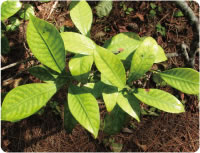
Location within the park
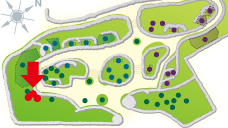
Characteristics
Bochoji is a small evergreen tree that grows near forests in non-limestone mountainous regions. It grows on Yakushima Island in the north to the Okinawa Islands and Iriomotejima Island, and also in Taiwan and southern China. Nagami-bochoji is a small evergreen tree that grows in mountainous regions, limestone regions of lowlands or near forests on the coast. It grows on the Tokara Islands in the north to each of the Ryukyu Islands, and in Taiwan and the Philippines. Both flowers are white which bloom between March and July, and their fruits are ripe between November and December.
Utilization
【tree, branch】 : Talisman against evil, Ritual
Best Time To See Calendar

General description of Miscanthus sinensis
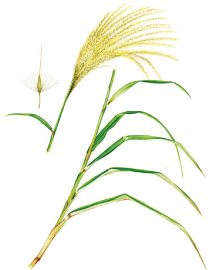
| Omoro name | Gane |
|---|---|
| Japanese name | Susuki |
| Family name | Poaceae |
| Okinawan name | Gehn, Gushichi |
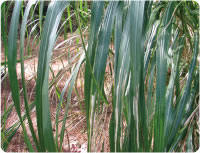
Location within the park
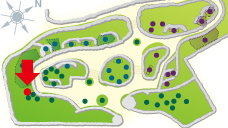
Characteristics
Susuki is a large perennial herb that grows in mountainous regions and lowlands where there is lots of sunshine. It grows in Sakhalin in the north to various parts of Japan, and in Russia, North Korea, Taiwan, China, Indonesia, the Philippines and Malaysia. The characteristic of the ones grown in Okinawa, compared to those grown on the mainland of Japan, is that they are taller and the part above-ground does not die in the winter.
Utilization
【stem, leaf】 : Material of thatched roof, livestock feed, storage container for grains, carrying basket, pot lid, underwear storage, rope for binding sugar canes, talisman against evil, ritualistic tools
【spike】 : Broom, toys
Best Time To See Calendar

Omorosaushi (763 of Volume 13) Asaka, Gane
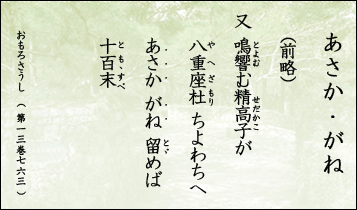
Meaning of the song
(Omitted)
The famous Sedakako
came to the Yaezamori shrine
and prayed to prevent the enemy troops
from approaching.








